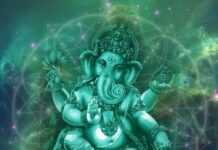Yoga is defined as Samadhi in the Yoga Sutras. Yet few Yoga practitioners know what Samadhi is or how to approach it. But without understanding Samadhi one cannot understand Yoga in the true sense of the term.
Samadhi is complete coherence and composure of mind, the mind fully united with the power of seeing, so that it loses its separate nature and merges into pure consciousness and bliss. Samadhi is the highest aspect of Yoga practice as complete meditative absorption that takes us beyond body and mind, birth and death.
By David Frawley
Samadhi in Yoga Sutras
Yoga Sutras defines Yoga as Samadhi. Yoga as Chitta Vritti Nirodha or control of the mind (YS I.2) is a definition of Samadhi. Its ultimate result of Tada Drashtu Svarupe avasthanam or then the Seer (Purusha) abides in its own Self-nature (YS I.3), is a definition of Nirvikalpa Samadhi, the highest Samadhi.
Every section of the Yoga Sutras has Samadhi as its main topic.
The first of the four sections of the text begins with Samadhi Pada, the section relating to Samadhi, which describes its nature and necessity.
Samadhi is the goal of Yoga practice or Sadhana as defined in the second section of the Yoga Sutras as Sadhana Pada which prepares us for Samadhi.
Samadhi, also called Samyama, is the basis of the yogic powers and accomplishments that form the third section or Vibhuti Pada of the text.
Samadhi in its fully developed or Nirvikalpa form, taking us beyond all thought, is the basis of Kaivalya or the natural state of the Purusha or inner Self that constitutes the fourth section and culmination of the text.
Samadhi, like many yogic terms, is difficult to translate because it has no equivalent in English or other languages. It has been loosely and wrongly defined as some sort of trance, ascetic state, mystical experience, altered consciousness, or even psychological delusion. Samadhi in truth is a state of direct awareness in pure consciousness beyond all concepts, motivations and experiences of the mind. It cannot be put into mere words, logic, information or theories.
Samadhi follows in Yoga practice after Dharana and Dhyana or concentration and meditation. These three factors of Dharana, Dhyana and Samadhi constitute Samyama or complete concentration, which is another definition of Samadhi. Samadhi/Samyama is the ultimate focus and concentration of our awareness, which requires the dissolution of mental consciousness, ego or any attachment to physical reality and personal identity. It is best rendered as a state of absorption or unity consciousness, but is better left untranslated and defined in itself.
Higher and Lower Samadhis
Samadhi exists on all levels of the mind (chitta-bhumis). There are lower non-yogic Samadhis, as well as higher yogic Samadhis. The lower Samadhis are of the dull (mudha), disturbed (kshipta) and distracted (vikshipta) levels of the mind, influenced by the gunas of tamas and rajas. These lowThe higher yogic samadhis are of the one-pointed mind (ekagra chitta) and the mind in its merged state (nirodha chitta). These yogic Samadhis form the main concern and practice of Yoga.
Samadhi of some sort occurs whenever the mind loses itself in something and experiences happiness, bliss or Ananda. Sensory experiences from watching a movie to contemplating a beautiful sunset involve a temporary absorption of the mind into its object of perception that are lesser or fleeting Samadhis. Sleep is our natural daily Samadhi of peace and renewal but does not occur at a conscious level that we can abide in.
Samadhi as seeking lasting unity and happiness is the very nature and motivation of the mind, which is empty and unhappy in itself. Ordinarily we seek outward-looking Samadhis that are transient in nature, based upon getting entranced in the illusory world of Maya. This is what we call the pursuit of enjoyment, happiness or achievement. When we reach our desire-based goal we gain a sense of fulfillment, happiness or accomplishment that form lower Samadhis, but these quickly disappear and leave us with yet more unfulfilled desires. The mind remains a problematical entity until we learn the yogic practice of Samadhi to resolve it altogether.
Only when we awaken inwardly to our eternal destiny as a reincarnating soul do we begin to seek the enduring inner Samadhis and not just outer pleasure, intoxication and enjoyment. We certainly should seek bliss or happiness in life, but we should do so inwardly where it can be found in an enduring manner. For that purpose, we must remove the ignorance that causes us to seek our happiness on the outside, where we cannot hold it, rather than within ourselves as the core of our being.
Reaching the Higher Samadhis
The higher or yogic Samadhi is born of turning within, inner calm, stillness, peace and silence, with the mind like mirror reflecting the reality of pure consciousness and losing its separative identity. It arises by detachment from outer names and forms and giving up all external cravings. Samadhi follows a radically different approach than the highs and enjoyment of the mind, which are but its shadow. Yogic Samadhis are initially Savikalpa Samadhis, involving thought or imagination, with the highest as Nirvikalpa Samadhi beyond all thought, which is the very nature of the Purusha itself
To develop yogic Samadhis, we must change our view of ourselves and the world. We are not a mere physical person seeking happiness and security in the material world during our short mortal life. We are a Divine reincarnating soul or Jivatman, which contains the energy and consciousness of the entire universe, and whose goal in life is the highest Self-realization.
We must awaken our inner soul purpose to achieve the highest Samadhi, and embark on a dedicated and enduring Sadhana to achieve it. The teachings of Yoga and Vedanta guide us along this ultimate path to bliss, particularly the practice of Self-inquiry that takes us beyond the mind. There are many aids including all aspects of Yoga as Jnana, Bhakti, Kriya and Karma, innumerable mantras and methods. We must develop an inner power of concentration, surrender and Self-knowledge in which we can transcend our outer ego, its karmas and attachments.
Do not forget the Samadhi in your Yoga practice which is its true goal and highest bliss. For this immerse yourself completely in your immortal Inner Being and forget the external world which is but your shadow. Samadhi is your true nature and inmost state of awareness that pervades the entire universe as the supreme light. Reclaim the bliss that is your immortal Self.
Article Courtesy : www.vedanet.com








